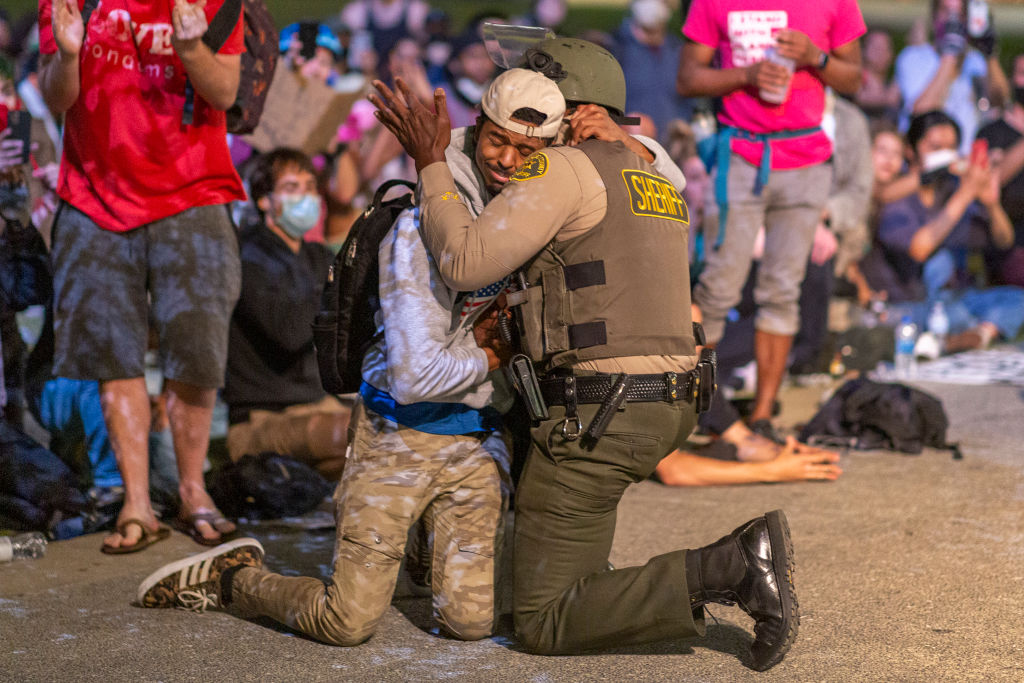
In the wake of the Black Lives Matter protests and reckonings with police brutality in the United States,
some have pushed the idea that hiring more women will help fix the problem. A similar sentiment can be seen in the United Nations, which marked the 20th anniversary of its women, peace and security agenda last year. A ‘top priority’ of the United Nations Police is
increasing the number of female officers. More women,
says the UN, ‘means more effective police services’.
This ‘add women and stir’ solution to improving policing seems attractive for several reasons.
First, women are believed to be more peaceable: they are more peace prone (women are
less likely to escalate in language, tactics and means of violence) and better peacemakers (women
are supposedly more conciliatory and
considered better at defusing tensions). Women are also seen as better communicators. This presumably allows them to access tools and work towards outcomes other than violence.
Second, beyond reducing police brutality, women can add other benefits to police forces. These functional arguments include that a police force which is more representative of the community
is considered more trustworthy and approachable. Women may feel more comfortable
approaching female police officers—especially when reporting sexual assault and other gender-based violence. And female police officers
may be more responsive to domestic and gender-based violence (although the evidence for this
is mixed).
Finally, diverse teams
make better decisions. More women, the argument goes, leads to improved policing.
But it’s important to note that many of the arguments for increasing women’s participation lean on binary gender stereotypes. Women don’t hold a monopoly on the traits, tools or benefits that are assumed to improve policing. Men can be taught communication and conciliation. Male police officers can be equipped with a range of tools that don’t depend on force. They can be taught to reach for those tools more frequently. Diversity
generally (not just gender diversity) can mean better decision-making in teams and improved community trust and access.
Nevertheless, to the extent that women do bring unique benefits to policing, simply adding women won’t solve police brutality. We must look at the systems in which police officers work.
Institutions such as the police and military, which are charged with protecting citizens and are authorised to use force,
tend to incentivise warrior masculinity, protective masculinity and militarised masculinity. These aggressive masculine attributes tend to define the job, while traits associated with femininity are undervalued.
External and internal incentives
can pressure women to ‘prove themselves’ on
male terms, thus sidelining their diverse perspectives. Adding women to the police force may simply replicate the status quo, rather than create a more peaceful force.
The experience of other security organisations helps to show how this can occur. Orna Sasson Levy is a scholar studying gender in the Israeli Defense Forces, which conscripts both men and women. She
observes that women serving in ‘masculine’ (combat-oriented) roles tend to emulate the masculine model of the combat soldier because they ‘perceive masculinity as a universal norm for soldierhood’. In doing so, they reproduce specific forms of masculinity—including some of the behaviours women
are supposed to ‘solve’.
Whatever we find attractive about women’s participation cannot emerge if our systems don’t reward femininity, whatever its forms and associated traits. If we—the public, police officers and police leadership—don’t value the very traits and skills that women are expected to bring and which differentiate them from men, then we cannot expect those items to be at the table.
This means changing social pressures and cultural ‘fit’ in police stations so that traits associated with women are not only acceptable, but actively valued. It means creating more, different models of the exemplar officer and police force. It also means reassessing how police evaluate core skills and promotions, and what benefits and support exist so that women who do join police forces are reasonably able to thrive.
In other words, not only is the ‘add women and stir’ approach insufficient to solve police brutality, but
women aren't the magic ingredient to ‘solving’ policing in America. Nor should women be put in the position of
shouldering the burden for reform. We need different systems—systems that value traits traditionally associated with women and devalue specific forms of masculinity—in our police departments. We need diverse groups not just to be present but to meaningfully participate in resetting the table and changing what good policing looks like.
And women should be at the table—whether or not they bring anything ‘extra’ because of their gender. Making sure our institutions of power reflect the diverse societies they serve can be worthwhile in and of itself.
 Print This Post
Print This Post